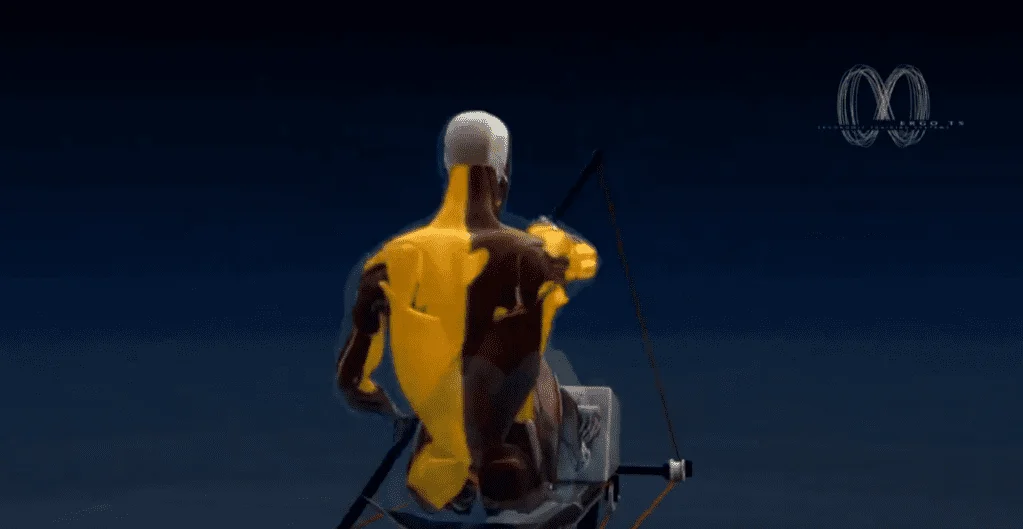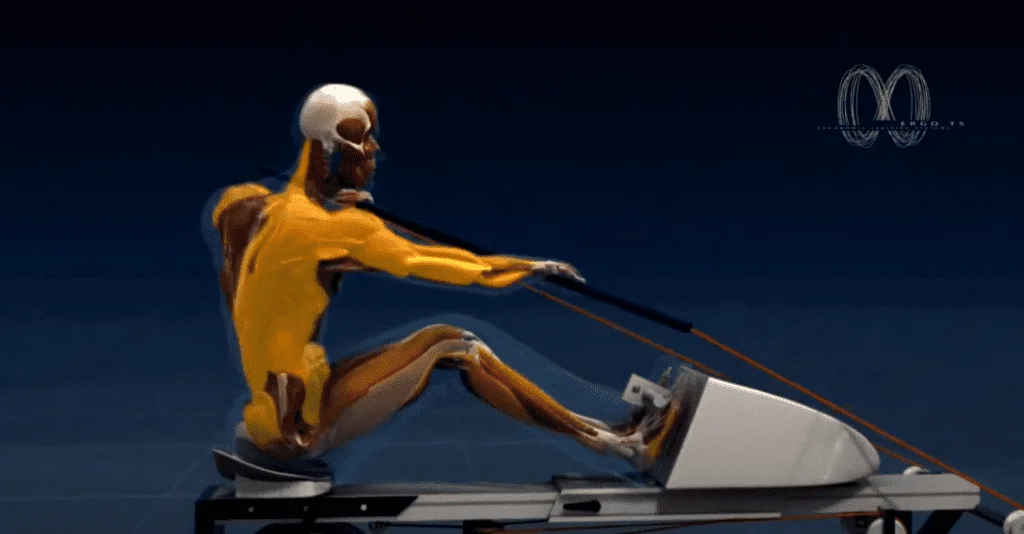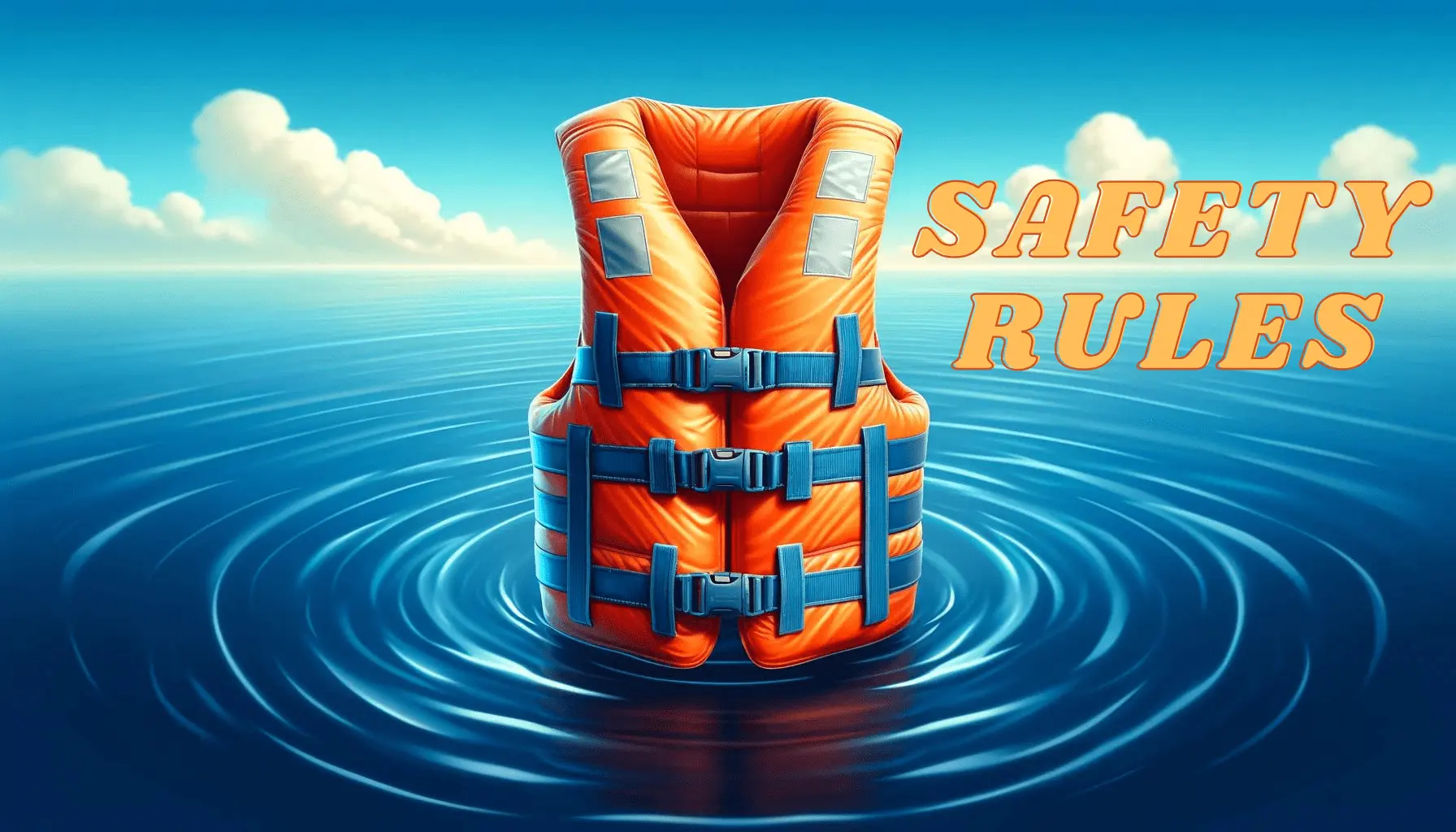Have you ever wondered if kayaking is the workout overhaul your fitness routine needs? Beyond the serene glide across the water’s surface, could there be untapped kayaking fitness benefits waiting to elevate your exercise regime? Many view kayaking as a leisurely paddle-power activity, but what if it’s actually a full-fledged kayaking strength training session in disguise? How does a single activity sculpt your physique from your shoulders down to your calves? Sit tight, as we dive into the ripple effect kayaking has on your musculature, reshaping the way you think about this dynamic kayaking exercise.
Key Takeaways
- Discovering the comprehensive kayaking fitness benefits beyond traditional upper body workout perceptions.
- Understanding how kayaking serves as an all-encompassing kayaking strength training that engages multiple muscle groups.
- Learning how a day of kayaking can provide a vigorous cardiovascular workout amidst the tranquil vistas.
- Gaining insight into how kayaking balances muscle toning and strengthening for an enjoyable fitness journey.
- Exploring the full scope of muscles employed during a kayaking adventure, from your neck to your legs.
Introduction to Kayaking as a Complete Body Workout
Many view kayaking as a seemingly simple activity, yet it encompasses an extensive kayaking workout that challenges and engages the entire body. The transformative nature of kayaking forges it into a multifaceted fitness regimen that escapes the traditional confines of an upper body-only exercise. In truth, kayaking harmoniously synergizes the kayaking muscle groups to provide a holistic exercise adventure, which is both invigorating and bountiful in kayaking fitness benefits.
The Misconception: Upper Body Exercise Only
The common myth that kayaking is limited to working the upper body is swiftly debunked once one experiences the comprehensive engagement it demands. With each paddle stroke, the workout encompasses far more than just the biceps and shoulders, demonstrating the inaccurate nature of this widespread misunderstanding.
Full-Body Engagement: From Head to Toe
Embarking on a journey through waterways, such as a challenging Hoover Dam kayak tour, calls into play a dynamic range of muscle groups. The intertwined muscles from the arms, back, neck, torso, and even the legs turn the act of paddling into an all-inclusive body workout. The connection between upper and lower body muscle engagement ensures a balanced and potent form of strength training that is both enjoyable and effective.
The Role of Kayaking in Cardiovascular Health
In addition to the physical toning and strength-building, kayaking serves as a heart-pumping cardiovascular exercise. The rhythmic motion of paddling increases heart rate, boosts blood circulation, and enhances lung capacity, illustrating kayaking’s profound role in promoting cardiovascular wellness.
By elevating kayaking beyond mere recreation, enthusiasts can enjoy the scenery while simultaneously availing the profound health benefits that this holistic workout offers. Regular practice not only contributes to a stronger physique but also pursues the betterment of heart health, placing kayaking amongst the preferred modes of maintaining a vibrant and balanced lifestyle.

The Core of Paddling: How Kayaking Strengthens Your Torso
At the crux of kayaking as an effective form of exercise lies the rigorous engagement of kayaking core muscles. The toned physique of seasoned kayakers is a testament to the kayaking fitness benefits that come with regular participation in this dynamic sport. As one propels through tranquil waters or challenges the rapids, it’s the core’s rotational power that lies at the heart of every stroke.
Engaging the Abdominals and Obliques
The rhythmic dance of dipping the paddle into the water and pulling it back is not just a surface-level motion. It’s a sequence that mandates the consistent contraction and relaxation of the abdominal muscles and obliques. For anyone looking to fortify their core through kayaking exercise, the repetitive nature of paddling stands as a stalwart ally. It’s an organic way to sculpt the midsection into a powerhouse capable of much more than just sport.
The Functional Impact on Your Core Stability
Regular kayakers often experience a notable improvement in their overall balance and posture – a direct outcome of enhanced core stability. This enhancement comes from the adaptive response of the core muscles to the demands of maintaining equilibrium amidst the unpredictable waters. Such stability is not just vital for advanced maneuvers in kayaking; it also translates to better functional fitness in everyday life.
Nurturing a Strong Foundation for Intense Paddling
The merits of a robust core extend beyond the visual appeal. As kayakers become more adept and take on more challenging water trails, the foundational strength of their torsos becomes ever more critical. This physical robustness built through regular engagement with kayaking exercise creates a fortifying base, enabling paddlers to tackle greater distances and tougher conditions. The kayaking fitness benefits thus earned also pave the way for other intense physical activities, setting kayakers on a path toward a resilient and well-conditioned body.

Back Muscles: The Powerhouses of Kayak Paddling
Kayaking not only provides an escape into nature’s serene waterways but also offers a rigorous workout, specifically targeting the kayaking back muscles that are fundamental to the sport. Engaging these muscles effectively transforms every stroke into a session of kayaking strength training, enhancing the paddler’s endurance and power.
Latissimus Dorsi: The Lats in Action
The latissimus dorsi or ‘lats’ are the broadest muscles in the back, integral for paddling. When you grip the paddle and pull through the water, your lats bear the brunt of the effort, channeling energy from your back directly to your lower body. This distributed power is essential for the long haul, whether you’re on a leisurely paddle around a local lake or engaging in a more intense kayaking excursion.
Rhomboids and Proper Posture in Kayaking
Maintaining proper posture while kayaking is not just about comfort; it’s also about efficiency. The rhomboids are key for keeping your shoulder blades retracted and your back straight, providing stability and balance with every challenging stroke. Strengthening these muscles is critical not just for paddling performance, but also for your overall upper body health.

Contribution of the Trapezius and Serratus Anterior Muscles
Comprising the upper back, the trapezius muscles significantly influence shoulder and neck movement, essential in the fluid motion of paddling. Alongside the serratus anterior, which is tasked with the fine-tuning of shoulder blade movement, these muscles keep your upper body in the best shape for paddling. Regular engagement through kayaking upper body muscles workout allows for a steady improvement in strength and endurance, vital for challenging kayaking adventures.
Upper Limb Dynamics: Kayaking Upper Body Muscles
Embarking on a kayaking workout engages more than just the scenic environment; it is an invigorating kayaking exercise targeting the upper body’s dynamic structure. The act of paddling itself necessitates a complex symphony of muscle movements, where every stroke serves as a testament to the prowess of the kayaking upper body muscles. As kayakers glide through the water, their upper limbs lead the charge in a powerful display of strength and endurance.
Deltoids at Work: Shouldering the Paddling Task
Imagine your shoulders bearing the orchestra’s leading tune as the deltoids take center stage during a kayaking session. Anterior, rear, and lateral deltoids collaborate to harness the power transferred from the back muscles through the arms, delivering robust paddle strokes that cut through the water’s resistance. This repetitive action ensures a comprehensive deltoid workout, enhancing the shape and strength of these pivotal shoulder muscles.

Pectoralis Muscles: Paddling’s Impact on the Chest
It’s not just the shoulders that feel the burn; the chest muscles, including the pectoralis minor and major, play a key role as well. These muscles assist in arm movement, ensure shoulder joint stability, and contribute to the torso’s rotational movements essential for propelling the kayak forward. Consistent paddling equates to a demanding chest kayaking workout that can result in more defined and resilient pectoral muscles.
Arms and Forearms: The Driving Force in Paddling
Finally, the arm and forearm muscles, including the biceps, triceps, and gripping muscles complete the upper body engagement in kayaking. These muscles provide the torque and grip strength needed for impactful strokes, catalyzing enduring and more defined muscles over time. Indeed, the comprehensive nature of the kayaking exercise ensures that no muscle is left unchallenged, offering a workout that builds muscular endurance and functional strength within the realms of the water.
In summary, kayaking is as much about the strength and endurance of upper limbs as it is about enjoying the unique tranquility of the waterways. As kayakers of all levels participate in this multifaceted exercise, they find themselves rewarded with not only an adventure but a tangible improvement in their physical conditioning. The kayaking workout thus stands out as a unique and effective method for developing the kayaking upper body muscles, ensuring the adventure on the water is complemented by a significant fitness journey.
What Muscles Does Kayaking Work: Lower Body Activation
While many enthusiasts celebrate the upper-body engagement kayaking offers, the kayaking lower body muscles also play a pivotal role in the sport’s wide array of kayaking fitness benefits. As paddlers navigate through the waters, their lower body muscles are silently at work, ensuring stability and control that’s crucial for an effective kayaking exercise regimen.
Legs and Hip Muscles: Unsung Heroes in Kayak Stability
Every stroke taken during kayaking is supported by a kayaker’s legs and hips. These muscular regions are the unsung heroes that contribute tremendously to kayak stability. Engaging leg muscles to press against the kayak’s interior not only provides balance but also fortifies the lower body, refining one’s kayaking technique and endurance.
The Surprising Role of Your Lower Body in Paddling
The involvement of lower body muscles in kayaking often comes as a surprise to many. Yet, the hips and legs are essential for executing precise maneuvers. By maintaining an active lower body, kayakers enhance their paddling power and gain the ability to cut through water with agility and grace. This harmonious motion showcases the full-body workout that kayaking inherently is, debunking the myth of it being an upper-body-centric activity.
- Balance and Stability: Leveraging leg and hip muscles for an anchored posture.
- Powerful Strokes: Utilizing the lower body force to amplify each paddle’s impact.
- Endurance: Building lower body resilience for longer, more rewarding kayaking adventures.
Conclusion
The exploration of kayaking as an exercise reveals a holistic approach to fitness. Kayaking benefits extend beyond the tranquil settings and into the realm of substantial health gains, activating almost every muscle in the body. It successfully builds a narrative that positions kayaking as more than a leisure pursuit; it’s a full-body kayaking exercise designed to enrich physical well-being. The incorporation of a paddling workout into one’s regimen doesn’t only enhance muscle strength in the back, core, and arms but also includes the often-overlooked power contributions from the shoulders, chest, and legs.
Initiating the journey to improving cardiovascular health and fortitude can be both enjoyable and comprehensive with kayaking. The sport invites participants to immerse themselves in environments that encourage physical exertion paired with mental tranquility. As such, it stands out as an ideal activity for anyone aiming to progress in their fitness journey, whether starting out or seeking to diversify their existing exercise routines. Moreover, the scalability of kayaking allows individuals to adjust the intensity to match their personal fitness levels, making it an inclusive option for a vast audience.
In sum, kayaking renders itself as an attractive venture for those aspiring to attain a healthier and more active lifestyle. The advantages are clear: fostering endurance, providing a rigorous paddling workout, and engaging the body’s muscles in a symphony of physical activity that benefits both the mind and body. The full-body kayaking exercise is not merely about moving through water but also about propelling oneself towards a heightened state of well-being, which is accessible with each stroke of the paddle.
FAQ
Is kayaking a good workout for fitness?
Yes, kayaking is an excellent workout for fitness. It offers a full-body exercise that engages multiple muscle groups and provides cardiovascular benefits, helping in muscle toning, strength training, and endurance building.
What muscles are primarily used in kayaking?
Kayaking works various muscle groups including the core muscles like abdominals and obliques, back muscles such as the latissimus dorsi, rhomboids, trapezius, and serratus anterior, shoulder muscles including deltoids, chest muscles like the pectoralis major and minor, arm and forearm muscles, as well as legs and hip muscles.
Does kayaking only work the upper body?
No, kayaking does not only work the upper body. While the upper body muscles are extensively engaged during paddling, lower body muscles such as those in the legs and hips are also activated to maintain balance and stability in the kayak.
How does kayaking improve cardiovascular health?
Kayaking provides a cardiovascular workout by increasing the heart rate as you paddle. The continuous movement involved in paddling across the water is both aerobic, enhancing heart health, and anaerobic, boosting your stamina and endurance.
Can kayaking help with core muscle development?
Yes, kayaking can significantly help with core muscle development. The core muscles are engaged in the rotational movements and stabilization required for paddling, which can lead to stronger and more defined abdominals and obliques.
Are leg muscles involved in the kayaking workout?
Yes, leg muscles are involved in kayaking. They are used for stabilizing the kayak against the forces of the water and aiding in the control of the kayak’s direction, although the level of engagement may be less direct than that of the upper body muscles.
What are the fitness benefits of regular kayaking?
Regular kayaking can offer fitness benefits including improved muscle strength and endurance, better cardiovascular health, increased flexibility and balance, and reduced stress levels due to the peaceful nature of the activity combined with physical exertion.
Can kayaking be considered a form of strength training?
Kayaking can be considered a form of strength training as it involves resistance with the water that helps build muscle strength and endurance, particularly in the core, back, arms, shoulders, and chest.



